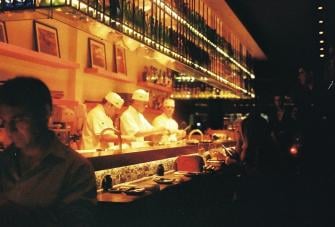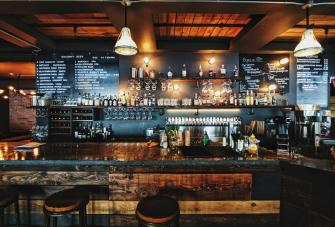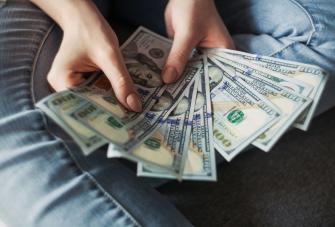How Common is Dine and Dash, and how can Restaurants Prevent it?
Restaurants operate on cut-throat margins. With increased competition from food delivery apps and rising costs, losses due to dine and dash can substantially impact a restaurant’s bottom line.
What is dine and dash?
In most restaurants, customers need to pay only after finishing their meal. When someone wants to dine and dash, they simply eat their food and leave the business before paying. In this situation, the restaurant can have little recourse, and the server might be obligated to pay for the cost of the customer’s meal.
Someone skipping out on a tab for a small breakfast might be annoying to a business, but it will not have a severe impact on its profitability. However, there have been cases of large groups dining and dashing after eating over $500 worth of food.
How often does it occur?
A study found that 5% of people have walked out of a restaurant without paying. Poor or slow service was among the top reasons for dining and dashing. All respondents may not have been honest, either.
Even worse, the research focused on restaurant-goers, not bar patrons. According to one bar owner, people attempt to drink and dash four to five times per week.
So, how common is dine and dash? Let’s say it is common enough for any restaurant to take it seriously.
How restaurants can prevent dine and dash
There aren’t many ways to make up lost revenue due to dine and dash. For this reason, it’s best to invest in pre-emptive measures to prevent food theft in the first place.
1. Build a smart restaurant floorplan
A restaurant’s appearance contributes to its atmosphere and appeal. The layout can also add to its security by ensuring no one can walk out without paying.
One strategy is to place the front door as far away from the dining area as possible. To see one great example of a smart floorplan, look at The Cheesecake Factory. The entrance typically includes a large lobby with seating and a counter featuring the range of desserts. A diner must walk through this area to reach the tables and restrooms. By creating this physical distance, a restaurant can make it harder for a customer to walk out quickly.
Another option is to station a host by the door at all times. Firstly, their presence can discourage someone from skipping out on the bill. Secondly, with cutting-edge hospitality technology, the host can see which tables have yet to pay. Staff can intercept diners if their table tries to dine and dash.
2. Add a payment counter
Related to our last point, a restaurant can require pre-payment at a counter before a customer receives their food. Counter service eliminates the risk of dine and dash entirely, but some business owners think it cannot work for them. Most places that require payment at a counter specialize in fast food, assembly-line style production, or other methods to deliver meals quickly.
Traditional restaurants can still employ counter service with proper planning. For example, casual eateries can provide table numbers to their patrons and deliver meals once ready. Buffets and locations with prix fixe menus can also require payment upfront and then charge for a la carte items with the pre-authorized payment method.
3. Be likable and attentive
Some people might visit an establishment with the sole purpose of dining and dashing. A charming and empathetic server can prevent this theft and even bring in more revenue and tips. Their job is to build a relationship with the diners and do their best to serve them. Once the meal ends, the table might not want to dine and dash due to their new appreciation of the server.
4. Provide faster, better service
No matter how likable a server, is or how marvelous the food tastes, service remains the chief determinant for most diners. Unsurprisingly, a Barclaycard report found that 25% of people consider walking out of a restaurant if the service is slow. With this being the case, offering prompt service can directly reduce dine and dash occurrences.
Consider these ideas to ensure fast, high-quality service:
- Use a POS with a table management system to prevent servers from being overburdened
- Replace your kitchen printer with a kitchen display screen to improve efficiency
- Analyze reports to know precisely how many employees to staff at any time and day
5. Implement table-side payment
Having diners pay at the table is very much a part of providing better service and reducing theft.
Tableside payment reduces the time it takes for an order to reach the kitchen. Most restaurants have the server place order in a terminal located away from the dining area. Workers must go back and forth from the table to send items to the kitchen. This process can be slow and can make diners feel ignored if it takes longer than expected.
With a mobile device, the server can quickly fire up appetizers from the table and continue suggesting main courses. The food will be added to the kitchen’s queue faster than the traditional method, and the server will have more time to interact with customers. Also, a waiter can keep an eye on guests who would otherwise dine and dash when no staff was nearby.
6. Pre-authorize credit cards for large parties
As we mentioned earlier, it is not uncommon for groups to walk out on a check. The cost is not only quite significant for a business to absorb when this happens, but it is unfair for the servers who likely spent considerable time with the party but did not receive a tip. A restaurant can minimize this risk by keeping a credit card on file for large reservations.
Some businesses can take it a step further and require a credit card for all reservations. Depending on the demand the location receives, this policy can reduce the number of no-show reservations and improve efficiency.
7. Boost security with cameras
A proper security system is a perfect deterrent. When a patron plans to dine and dash but sees a camera facing them, they will likely think again. The consequences of stiffing the restaurant are likely worth far more than the meal. Even if the guest walks out without paying, law enforcement can use the video to find the thief.
If an establishment cannot install a security system, it can place a fake camera on a wall and reap the benefits. Many modern dummy cameras include blinking lights and wires, so guests will believe they are being recorded.
Dine and Dash: Frequently Asked Questions
Do servers have to pay for dine and dash?
There is no universal answer to this question. In some states, such as New York, a restaurant cannot require an employee to pay for losses incurred from dine and dash. Federally, restaurants cannot require repayment if it would force the server to earn less than minimum wage.
For example, a waiter earns $5 per hour and works a 5-hour shift. They receive $25 base pay + $50 in tips. $75/5 hours = $15/hr.
That night, a table walks out on a $40 meal, and the restaurant requires the server to make up the difference. $75 - $40 = $35. $35/5 = $7/hour.
The federal minimum wage is $7.25/hour, so the restaurant cannot take the $40 from the server’s tips since it would reduce their hourly wage to $7.
That said, there are exceptions to dine and dash laws, and an attorney would be the best resource for more information.
What are some common dine and dash consequences?
Dine and dash laws vary by state. In some areas, it is classified as petty theft with a light punishment. In other states, such as Florida, dine and dash penalties can be severe. A theft of more than $300 can carry up to five years in prison and a $5,000 fine.
Moreover, there are dine and dash consequences that do not involve the legal system. A restaurant might share a dasher’s photo on social media, making them viral in all the worst ways. Restaurants in the area may refuse to serve the person after their identity is determined, even if the dasher has no history with that business.
What should a restaurant do after a dine and dash?
First of all, calling law enforcement is best since a theft has occurred. Depending on company policy, some restaurants may only call the police after a significant loss. Whatever the case, do not hesitate to contact the police and provide any evidence you have. Even if you do not recoup your losses, the police can warn other restaurants about patrons matching the dasher's description.
Secondly, a restaurant should look into how the theft occurred. Consider all the elements that can play a role and think about resolving any gaps in security. Could a better security system or better customer service have prevented the dine and dash? Would a more effective restaurant management system have helped?
At Epos Now, our software helps restaurants oversee tables, orders, customer habits, and so much more. Our portable hardware is perfect for providing prompt table-side service, and our rugged touchscreen monitors are perfect for busy counters.
Contact Us to learn about implementing the Epos Now system to enhance your restaurant’s security




